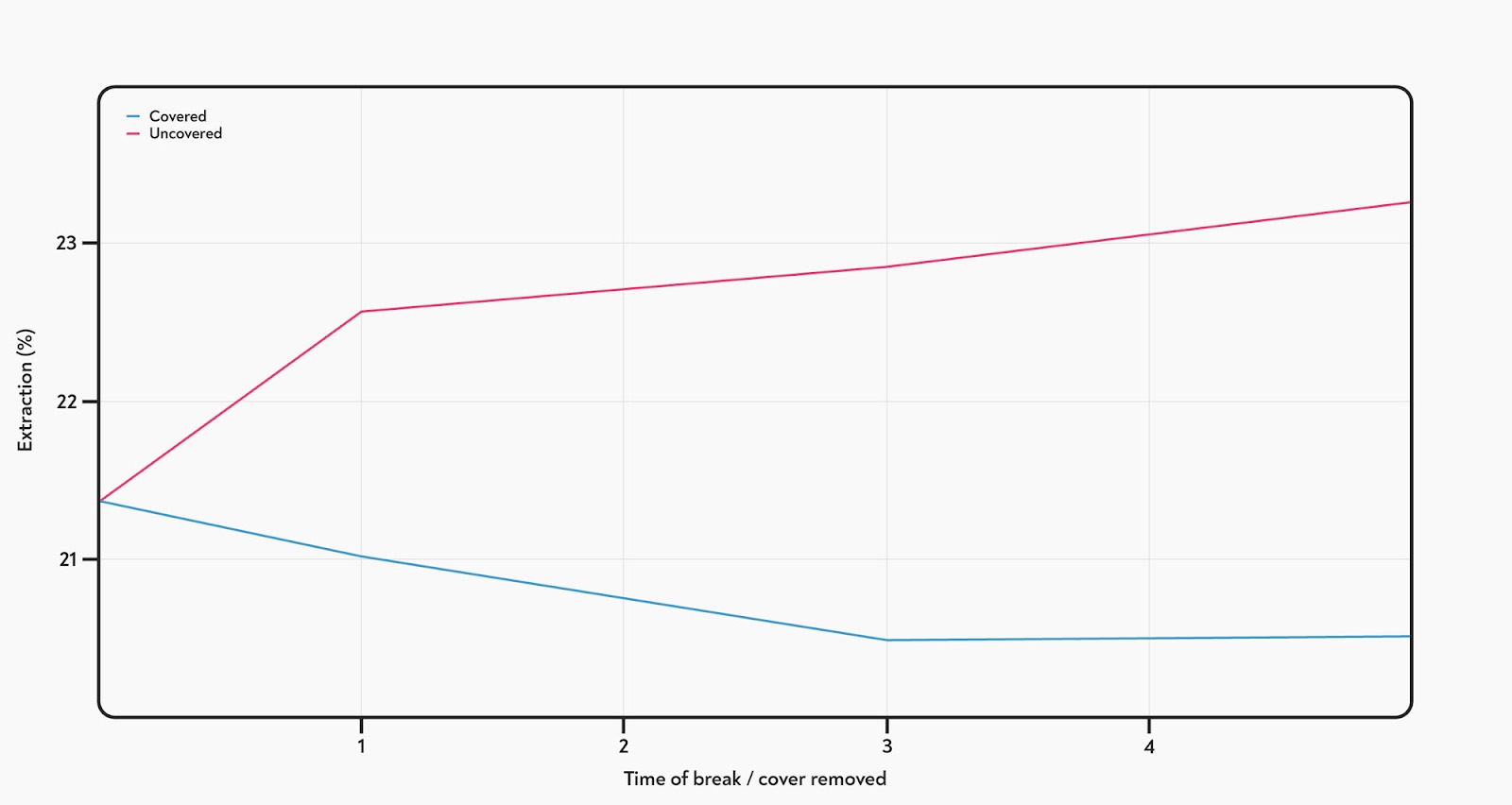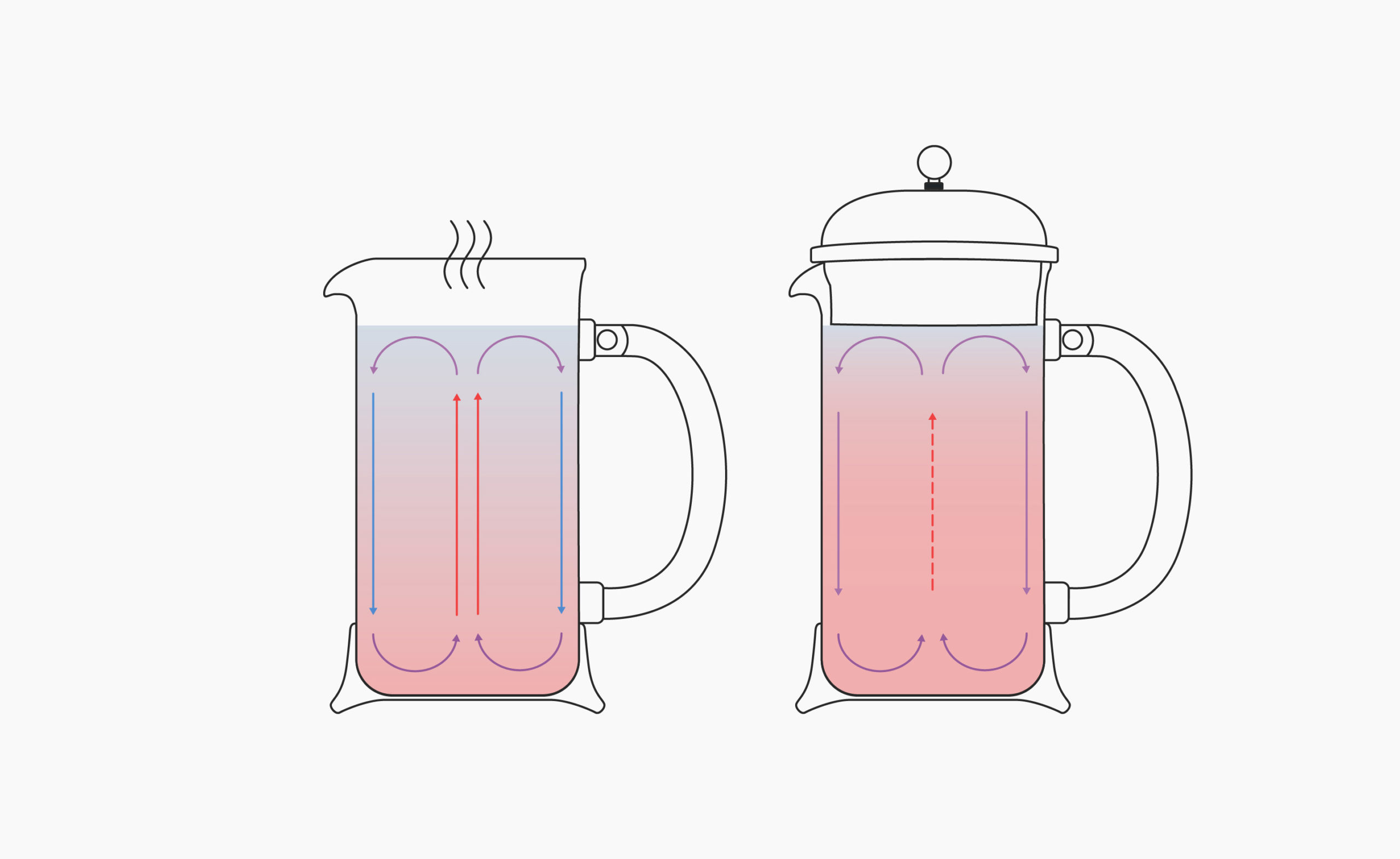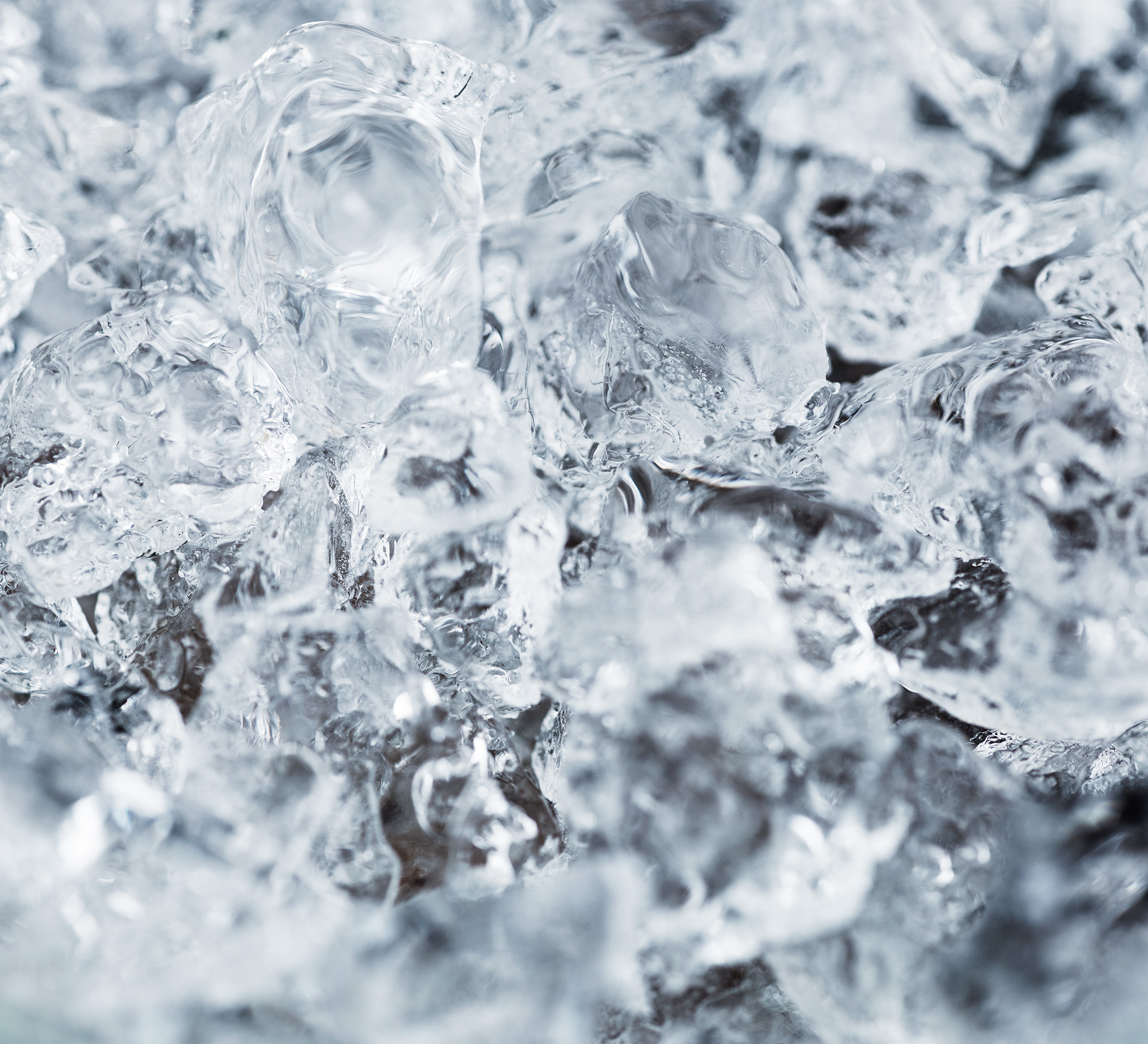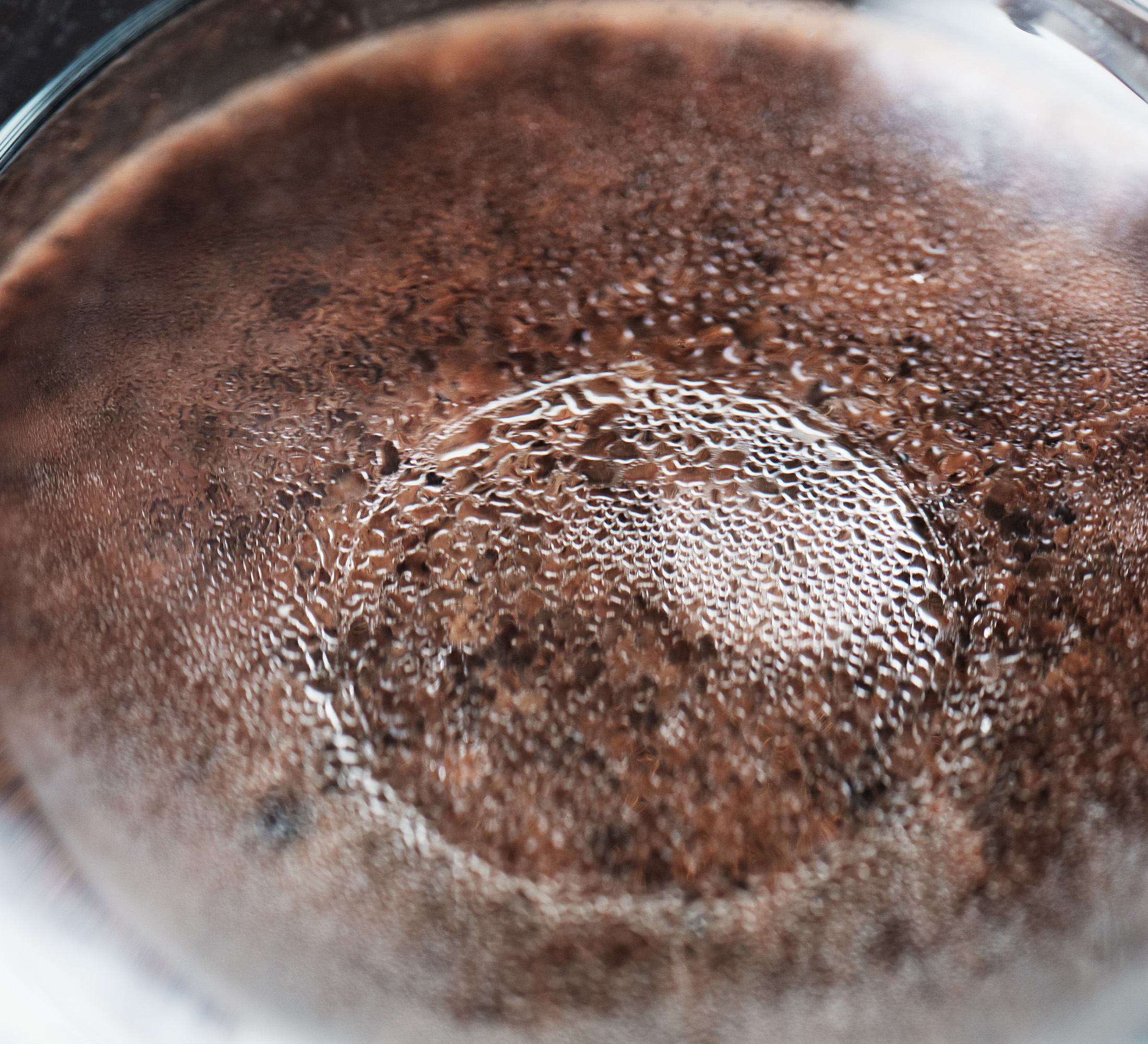While writing our course on Immersion Brewing last year, we noticed a strange phenomenon: when brewing coffee in a French Press, leaving the lid off during the brew seemed to increase extraction substantially. This is the opposite of what we would have expected — leaving the lid on should keep the water hot for longer, which we would expect to increase extraction. Because of this, we tentatively recommended leaving the lid off the French Press, at least until after breaking the crust, in order to maximise extraction.
We had noticed this effect before: in our experiments designed to determine the best time to break the crust in a cupping. In that particular experiment, we covered the cupping bowls with polystyrene lids, to make sure that cupping didn’t rely on the crust insulating the surface of the cupping bowl. We found that the longer we left the polystyrene lid on, the lower the extraction became.
 Extraction in a cupping decreases, the longer the cupping bowl is covered for. For more details, see the original experiment.
Extraction in a cupping decreases, the longer the cupping bowl is covered for. For more details, see the original experiment.
The best explanation we could come up with at the time was that drips of condensation from the lids might be falling onto the crust and partially breaking the crust prematurely. However, after we published these two experiments, Professor Abbott and BH reader Matt Schneider independently, and nearly simultaneously, suggested a more elegant explanation: that leaving the lid off and allowing the surface to cool was increasing extraction by helping convection currents to form.
 Convection currents in a French Press. With the lid off, evaporation cools the liquid at the top more quickly, creating a larger temperature gradient. The larger temperature gradient leads to more convection.
Convection currents in a French Press. With the lid off, evaporation cools the liquid at the top more quickly, creating a larger temperature gradient. The larger temperature gradient leads to more convection.
If you leave the lid off your French Press, the top part of the liquid cools down because of evaporation. This creates a temperature gradient, with hotter water at the bottom and cooler water at the top. Hot water is less dense than cold, so the hot water rises. The cooler water at the top, meanwhile, sinks to the bottom. This creates a circular current in the liquid — convection.
To see whether convection is indeed causing this strange effect, or if it was thanks to drops of condensation interfering with the crust, we set up a simple experiment. We brewed coffee in cupping bowls and, for some of the cups, used concave dishes as lids. The lids were either filled with hot water, to keep the lid warm, or with ice, to keep the lid chilled.
Cold lid filled with ice on the left and heated lid filled with boiling water on the right.
If having the lid on was preventing convection from taking place, then we would expect higher extraction in the bowls with chilled lids, because the cold lid would increase the temperature gradient. If, on the other hand, the lid was interfering with extraction because of condensation dripping onto the crust, then we would expect lower extraction in the bowls with chilled lids, since the cold lid would lead to more condensation (as well as reducing the overall brewing temperature).
We set up 3 cups with no lid, 3 cups with heated lids, and 3 cups with chilled lids. We brewed the cupping following the BH cupping protocol, keeping the lids in place (except for when stirring and cleaning the cups) until 8 minutes had passed, and then measuring the extraction in each cup. The extraction was calculated from the average TDS reading of three samples from each cup.
We found that the extraction in the bowls with a heated lid was lower than in the bowls with no lid, just as it was in previous experiments. However, the extraction in the bowls with a chilled lid was very slightly higher than in the bowls with no lid. This suggests that the increased extraction is indeed thanks to convection in the bowls. Even though having ice in the lid would reduce the overall brew temperature, the effect of convection is strong enough that it actually results in an increase in extraction.
The difference in extraction in this cupping was fairly small, however, compared to what we had seen previously in the French Press, where leaving the lid off increased extraction from 19.7% to 22.1%. This could be because in a French Press, evaporative cooling is more important than in a cupping bowl, where much of the heat is lost via the bowl itself.
So what does this tell us? It confirms that if you’re brewing with an immersion method, whether it’s French Press or Clever Dripper, you’ll get higher extraction by leaving the lid off, as strange as that may seem. If you’re worried about losing too much heat, then preventing heat loss via the sides will be more effective, in terms of extraction, than putting a lid on — perhaps by choosing an insulating material for your brewer, or by brewing larger amounts at a time.
However, while we’ve now seen this effect in three separate experiments, we still only have a limited amount of data on the phenomenon — not enough, for example, to call the data statistically significant. We would still like to collect more data, and to find out how things like material choice and the size of the brewer affect the result — and most importantly, to see what effect this has on the taste. To do this, we need your help! If you use a French Press at home or in your cafe, and would like to help us gather more data, please follow these instructions to help us (ahem) lift the lid on this mystery.







What do you think would happen if you put ice in the plunger of an extended steep aeropress??Thinking about trying this with Jonathan Gagne’s 10 minute recipe 😀
Hey Justin, do you mind clarifying what you mean by ‘ ice in the plunger’? Assuming you mean adding ice to the slurry — it’s an interesting thought. Just this week we’ve published new lessons in The Espresso Machine course where we’re talking about temperature profiling in espresso. So for sure, you’ll get some interesting results by adding a controlled amount of ice a certain points during the extraction. But, the difficulty will be that the slurry will be locally cold in the areas closest to where the ice is. So that could be a challenge to control. You could try making pelletised ice.
I don’t think he meant to put the ice into the coffee-slurry directly but rather in the hollow part of the plunger you use to push the coffee through the filter. At least thats what I thought about while reading the article. 🙂
This is great stuff to read since I have been in coffee I thought closing the lid do or your french press increases extraction….which is the opposite!well done for your experiment job well done!